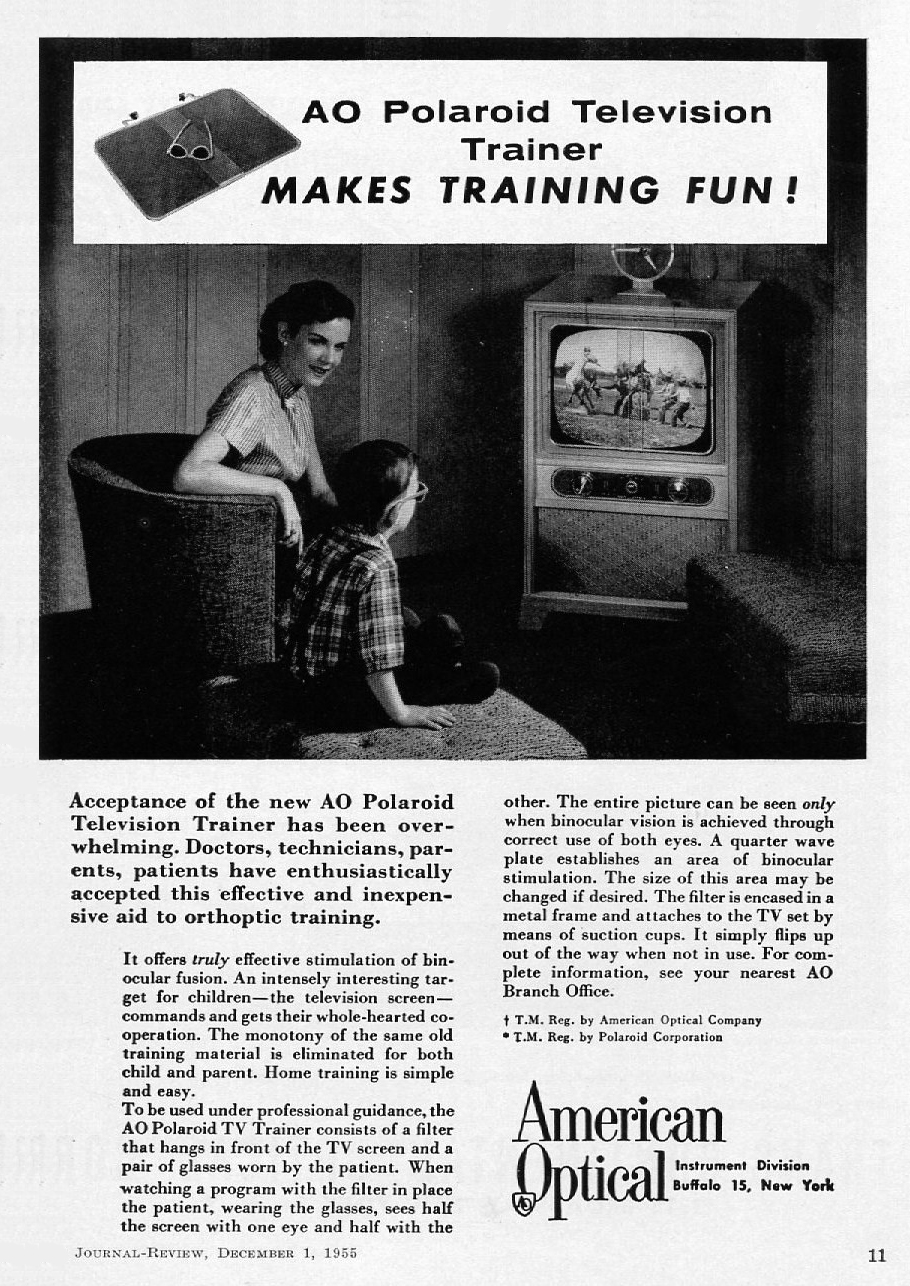
Making glasses cool for Kids
A history of 100+ years
How do you get youngsters to wear glasses?
One hundred years ago, an eyecare company launched an innovative co-branding program to do just that. The resulting campaign, “Boy Scout” eyeglasses, may have been the first time spectacles were marketed for their "coolness" to the youngster generation.
By Ted Gioia.
No sales data survives, but the company reported a year later on the encouraging response to the Boy Scout program. American Optical followed up in 1917 with a campaign featuring a young girl whose headaches went away when she got her first pair of eyeglasses. In subsequent years the company developed a series of annual “back to school” awareness campaigns that could be implemented in local eyecare practices.
Before the 1920's, schools rarely conducted vision screening of young students. These programs gained momentum after a 1928 study, promoted by the Surgeon General, which showed that 45% of the students tested had a vision issue. But the first programs, staffed by volunteers, often produced flawed or unreliable results
Around this same time, American Optical even entered the movie business to convince parents to schedule an eye exam for their children. In 1927—the same year that Hollywood released the earliest ‘talking’ film—the company distributed a three-minute movie showing the facial expressions of a young girl putting on glasses for the first time.
This short film clip wouldn’t win any Oscars and don’t expect it to go viral on YouTube. But the expression of delight on the youngster’s face when she could finally see the world with clear vision captivated those who watched it in the 1920's. The release of this public service commercial (as we would call it today) represented a milestone moment in raising public awareness about children’s eyesight and the role it plays in learning.
A major breakthrough came with the American Medical Association’s endorsement of the Massachusetts vision testing program in 1943, and over the next two decades similar initiatives gained traction in most US schools. Attitudes to glasses were also changing—in a pioneering psychological study from that same year, Professor G.R. Thornton of Purdue showed that people wearing spectacles were perceived as more intelligent.
This early initiative would blossom into an on-going effort that continues in the 21st century to help youngsters see—at home, at school or at play. The history of this campaign to improve the eyesight of children and teens is now documented in a series of images and documents recently made public by the Optical Heritage Museum in Southbridge, Massachusetts. They are drawn from the archives of American Optical, now part of Carl Zeiss Vision.
“We still need to raise awareness of these issues today,” comments ZEISS Vice President Karen Roberts. “Poor eyesight is still a major cause of problems in school and elsewhere. Fortunately we have a much wider range of tools and technologies nowadays to address these needs—everything from MyoVision spectacles that reduce the progression of nearsightedness to polycarbonate lenses that offer enhanced safety and protection.”
This additional aid to orthoptic training, the "AO Polaroid Television Trainer" (1955) was an inexpensive alternative to assist children in improving their vision
American Optical's "Boy Scout" Glasses from 1916
As technologies evolved, so did the tools available for addressing the national eyesight deficit. In the 1940's, American Optical funded research at Yale on the link between vision and child development. In the 1950's, the company developed a technique for using the home television as a training device to teach binocular vision. In the 1960's, the company made great strides in improving eye safety with more impact-resistant plastic lenses.
A wide range of other advances have been made in youngsters’ eyewear in more recent years. Even those rugged Boy Scout spectacles from 100 years ago can’t compare with the current offerings. “Lenses nowadays are more impact resistant, harder to scratch, lighter weight and block dangerous UV rays,” comments Roberts.
“But new risk factors are also present today—especially with youngsters spending so much time staring into phones, computers and other devices that emit large amounts of potentially dangerous blue light.”
"The biggest obstacle has yet to change", she adds. "The most important step is getting parents to schedule an eye exam for their children”, remarked Roberts. “We hope that sharing these images from the past will not only celebrate the history of eyewear, but also remind people about what they can do for their family’s vision needs today.”
Norman Rockwell
AO and art team up
Education
Educating the public without the internet
You might also like…




